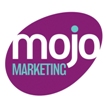How To Maximise Your Marketing on LinkedIn
Is this how you sometimes feel about your social media marketing?
It’s true, many business owners and managers get frustrated with social media marketing and dispense with the opportunities it offers fairly quickly. This is often down to not having a clear goal or a plan as to how to achieve it. Additionally, with small businesses, where resources can be tight, the best intentions can be put on the back shelf when other tasks require immediate attention.
With over 303 million active users per month of which 40% visit on a daily basis, it is hard to ignore the potential of LinkedIn. Many use the social media platform to seek out quality content that can help them resolve business issues, to do their job better and to make better decisions. They also login to actively promote their own business interests to help reach their goals. Many marketers are confident that LinkedIn is undoubtedly the most effective on-line platform for B2B marketing, so perhaps it is time to revisit this.
So, what kind of marketing goals would you want to achieve?
Ultimately, we’re after generating leads, but creating brand awareness, trust and credibility in our services and products are important goals that need to be achieved first.
Your LinkedIn Profile
Prior to starting any kind of activity, you’ll need to complete your profile for both your personal and your company one. This will mean adding your logo, a description of your business, a meaningful header image, your website address and so on. It is generally accepted that profiles that are complete receive twice as many visitors as those that are incomplete. You can also easily enhance your profile and reputation by requesting recommendations from clients that you know well.
Does your profile explain simply and quickly how you help your typical customers?
If not, then you’ll need to make some changes. I’d advise getting an honest second opinion just to make doubly sure. We often get a little too close to our own businesses and sometimes cannot see the wood for the trees.
Creating and Publishing Content
Once your profile is completed you can create a posting schedule to distribute your content. Ideally, you need to post at least once a week, but statistics have shown that even those that post once a month gain followers 6 times faster than those that don’t. The main purpose of your posts is to demonstrate your authority in your field, so you have to add value for your target audience. Try to tackle the problems that your customers are facing. If you do this regularly with quality content you will build the trust and confidence that you need in order to create the all important business lead.
There will be times when you are struggling to find content, so simply re-cycle a previously published article. If it had value first time around, then it will hold that value a second or third time around. Additionally, always use images to accompany your posts as this will increase the level of engagement. Posts with images or video receive 98% more engagement that those that are just text based.
You can also supplement your posts by commenting on other peoples posts especially those of identified prospects.
Generating New Prospects
Once you have established the desired level of brand authority you can shift your focus to generating leads. LinkedIn is an incredibly powerful tool for B2B marketing.
Utilise it’s search facility to find and narrow down prospects most likely to buy your products or services. You may need to review each profile before contacting them. By doing this you can tailor your message in a more targeted way.
Perhaps you could focus on your 2nd degree connections and see if a mutual contact can provide an introduction, thereby creating a warm lead. However, if you are making direct contact with a prospect then greater care is required.
It is pretty important to personalise your request to connect. Once they are connected, they’ll start seeing all your great content and you can start a conversation with them and start building a rapport. Where possible try and find some commonality or as mentioned previously, comment on their posts. By building your relationship on-line, you can remove some of the sales barriers for when you look to move your relationship off-line perhaps to set up your first meeting.
Integrated Marketing
Once your content is created you can use it on other social media platforms, your website and possibly your e-newsletter. Also add links to your company page on your website, email signature and news/blog pages. A coordinated multi-channel communication strategy will maximise your hard work. Additionally, where possible, it is good practice to back up your online networking with some actual physical networking. It is considered best practice to have an integrated approach rather than implementing your marketing activities in isolation.
What Next?
If you run a small business, it is often the case that alongside marketing, you’ll also have to provide customer service, do the bookkeeping, handle sales and much more besides. Therefore, it is imperative to develop a plan and schedule your social media activities in your diary. Dedicating an hour on a Monday for creating some content and maybe 20-30 minutes on the other week days would be a workable starting option. However, if you just cannot find the time, energy or feel you haven’t really got the know-how to do it yourself, then perhaps consider an external marketing service provider.
Do You Need Affordable and Effective Marketing Support?
Thank you for reading this article. I hope these marketing tips were useful.
If you need help to implement your marketing activities, then please call Neil Chatterjee today on 07966 612112 for a no-obligation chat about your requirements.
